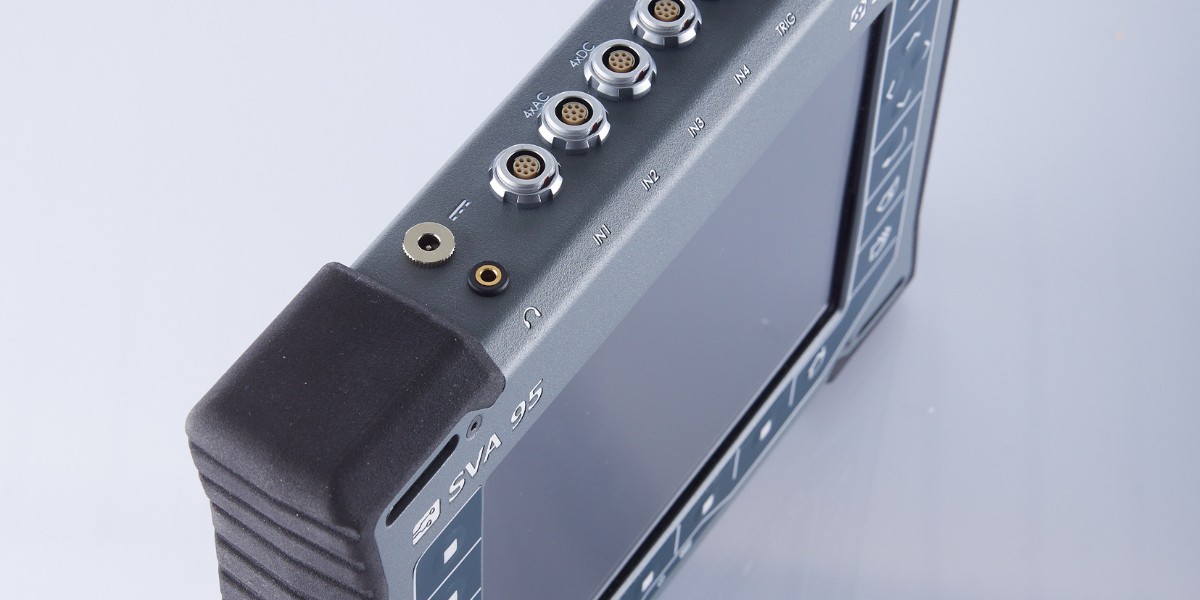Technical data
| Input Channels | 4 x AC/DC, 1 x TACHO for speed probe/external trigger |
| Frequency ranges [-3 dB] |
|
| Sampling mode | Fully simultaneous for 4 channels |
| FFT resolution | 100 to 3.276.800 lines |
| Display | Color: 1125 x 800 pixels |
| Processor | Intel Atom 1.9 GHz |
| Memory, Route | 64 GB, max., 16 GB for one route, number of routes is limited by free memory only |
| Raw signal recorder |
|
| Interface | USB 3.0, 2.0 compatible |
| Operating temperature range | -10 °C to +50 °C (-14 ºF to +122 ºF) |
| Power | Battery 8 hours of operation |
| Case | IP 65 rating, aluminium heavy duty |
| Size & Weight | 29,5 x 23 x 4,9 cm, 1,98 kg |
| Languages | German, English, French, Spanish, Italian, Russian, Hungarian, Romanian, Polish, Czech, Thai, Chinese |
| Built-in camera | 5 MP, autofocus |
Included modules
Diagnostic
This module is an expert system for automatic detection of possible machine faults. It enables you to automatically detect machine faults such as unbalance, looseness, misalignment and bearing faults.
Analyzer
With the Analyzer Module, the user can select the type of measurement (from simple overall values to FFT’s and time signals, to more advanced measurements such as orbits using displacement / proximity probes) and set up multiple, synchronized, simultaneous measurements from all channels with settings such as frequency range, sampling rates and units.
- Real-time FFT
- Demod/envelope analysis
- ACMT – low speed bearing analysis
- Orbit Measurement
- User Band Pass Analysis
- FFT Resolution: Min: 100 lines, Max: 3,276,800 Lines
- Fully simultaneous for 4 channels
- Crest Readings
- Time signal measurements
- Phase Shift
- DC Measurements
- Centerline Measurements
- Smax
- Overall Measurements
Balancer
This module allows for balancing equipment in situ, both in the field and during final assembly, providing a quality product.
- Multiple balancing types such as Polar (0-360 degrees), component and fixed weights
- Flexible Visualization of balancing: polar plot and table overview
- Optimizing the final vibration level at the two bearings supports in an early stage while balancing in a single plane
- Allows for Rotor setting to calculate balance quality according to ISO 1940
Advanced Balancer
With the advanced balancing module, balancing of flexible and rigid rotors in up to eight (8) planes is possible. Multi-plane is used for rotors with complex geometries that exhibit significant unbalance in multiple planes. In addition, the Advanced Balancer Module can assist with complicated jobs where the number of measurement points is larger than the number of correction planes available.
Ultrasound-Recorder
This module uses a microphone (sold separately) to enable the measurement of sound that is inaudible to the human ear. Typical applications that benefit from the use of ultrasonic measurements are the detection of air leaks, electrical arcs or the early detection of bearing faults.
Bump Test
The bump test determines the natural frequencies of a machine system. In the context of a rotating machine, this pertains to those ranges of rotational speeds within which vibrations are disproportionately amplified due to resonances, posing the potential to damage the machine (Smart VibroAnalyzer 95 only).
Lubrication Greasing Control
This module can be used to monitor and control bearing lubrication processes. Both a lack or excess of lubricant is harmful to a rolling element bearing. This module measures the actual bearing lubrication status and informs the operator when the lubrication state is optimal, relative to programmed lubrication guidelines.
Stethoscope
This module is designed for listening to vibrations. These can also be recorded and played back.
Oktave Analysis
With the Octave Analysis Module, you can measure audible sounds by connecting a microphone to the Smart VibroAnalyzer 95. Measure sound levels and octave spectrums with selectable resolutions of 1/1, 1/3, 1/12, or 1/24.
Camera
The camera module allows you to "record" the raw signal from the sensor, i.e. the raw signal from the machine. The module is equipped with an optical camera that allows the SVA 95 user to take pictures of the machine.
Optional Modules
Tracking
With the Tracking Module, resonances in the system can be determined by the measurement and graphical display of the amplitude and phase angle of the rotational vibrations as a function of the speed. The Tracking Module uses the raw vibration signal and visualizes the amplitude and phase angle in a bode, Nyquist, FFT waterfall diagram, and numerical reading.
This ensures dedicated balancing outside the range of machine resonances.
Data Collection
One of the fundamental principles of condition monitoring is data collection based on predefined alarm limits. The Data Collection module is used for the periodic collection of vibration data of the balance of plant machinery. Simply create a route tree with measurement points and locations in the Schenck Diagnostic Center Software and upload the route in the Smart VibroAnalyzer 90. With the uploaded route you are prompted by the unit to move from machine to machine with specific measurement points to efficiently collect data.
The Smart VibroAnalyzer will notify you of an alarm situation that can easily be reviewed on the unit to provide onsite feedback. After the route is completed, the collected data can be transferred back to the Schenck Diagnostic Center. Software via USB-C cable to store readings, review trends, analyze data and provide reports.


